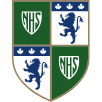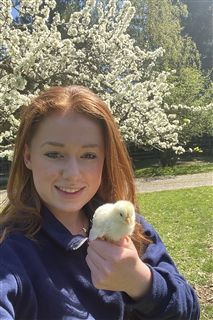Congratulations to the three Glenlyon Norfolk School students who participated in the 2021 BC/Yukon Virtual Science Fair! The students competed against peers in their region for a chance to represent British Columbia at the Canada Wide Science Fair in May. Taya Lee ’22 placed first overall, Charlotte Quin ’24 placed third overall and Alexis Kuo ’24 placed fourth overall. All three have advanced to Nationals!
The project that awarded Taya first overall for Vancouver Island was ‘Recycling Oil from Contaminated Water using Azolla Filiculoides to Create a Biodiesel Blend.’
“I was really surprised and I’m so grateful for all the sponsors and also the school for being so supportive,” she said. “I’m super excited to go to Nationals with other finalists and meet like-minded peers who are also really interested in the sciences.”
Taya started to work on her science fair project after learning about the harmful effects of pollutants, and she also had an interest in renewable energy sources to reduce greenhouse gases and finding solutions for water pollution.
“After researching the water-purifying properties of some species of algae, I began visiting local lakes and came across a massive growth of Azolla filiculoides at Swan Lake. This inspired me to create my experiment, which is essentially recycling motor oil from contaminated water using Azolla filiculoides to create an Azolla biodiesel blend,” she explained.
In the future, she hopes her findings will further the idea of creating different biodiesel blends which can clean oil-contaminated bodies of water in both underdeveloped and developed countries, while also reducing carbon dioxide emissions and the dependence on petroleum production.
“In the end, I noticed the Azolla filiculoides was able to effectively absorb 100 per cent of the oil it was placed in, and in comparison to motor oil the Azolla biodiesel blend was able to release more energy,” she said.
Charlotte’s science fair project was ‘Growth and Feed Consumption of Chicks.’ She said she got the idea a few years ago when she received chickens and wondered how she was going to feed them since they didn’t produce feed. Most places, she notes, depend on commercial feed for their chickens.
“What I wanted to do was find a supplement for the chickens that is sustainable, and can be grown locally on the island to reduce chickens consumption of commercial feed and make farmers more self-sufficient,” explained Charlotte.
For her project, Charlotte had three groups of chicks, composed of 28 chicks each. They were separated into three pens with the same living conditions, and all had unlimited access to commercial feed to make sure they grew properly. Supplements were given to two of the groups; one received spent grain, and the one received sprouts, while the third group was given exclusively commercial feed.
“After the third week and their third weigh-in, the sprout group was 38 per cent lighter, and the spent grain and the commercial feed group were the same weight, so it contradicted my hypothesis that the supplemented chicks would be heavier—they were not,” she said.
At the end of her experiment, Charlotte notes she was left with more questions than answers but found it interesting that the chicks that were supplemented with sprouts ate less.
“I would like to do another experiment in the future expanding the time that I supplement them, and seeing their growth rate with it,” she added.
Alexis did her science fair project on ‘Enhancing the Effectiveness of Non-medical Masks.’ Her goal was to create a better mask for everyday use, one that would filter small particles. She looked at everyday masks and noticed they only filter large particles so she set out to find a way to make small particles larger.
“There’s this chemical called Potassium Alum that can turn small particles into large ones that can then be filtered, so I applied a coating of the chemical onto a filter,” she explained. “The filter, you just dip it into a solution of that type of chemical and it forms a crystal coating.”
In the final results for her experiment, she noticed the coated side had less red food dye seeping through to the second layer compared to the non-coated. The conclusion was the coated side, with the Potassium Alum, was more effective.
She worked on her project for several weeks, and she started when taking part in a crystal-growing competition at school. Alexis has participated in science fairs since Grade 6, and this was the first time she has moved onto Nationals.
“I’ve always wanted to go…I was so excited and really happy,” she said.
Way to go Taya, Charlotte and Alexis, good luck at Nationals!





